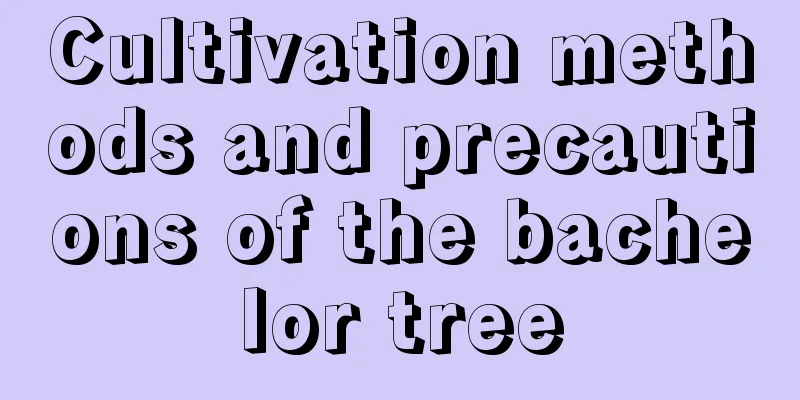Cultivation methods and precautions of the bachelor tree

1. Breeding methods1. Soil: It is best to use loose sandy soil, which requires soil with good drainage properties so that excess water in the soil can be discharged relatively quickly. 2. Temperature: It likes warmth, but the light in summer is too strong, so it needs proper shade. There is less light in winter, so the potted plants should be placed in a well-lit location. 3. Watering: It is drought-resistant and does not require much water. It only needs to be watered once a month. Do not water it too much, as this will easily cause water accumulation in the pot and lead to root rot of the plant. 4. Light: It likes light and should be placed in an open air place with good light, but it should be given appropriate shade in summer to prevent excessive light from burning the plant. 5. Fertilization: The plant will enter a dormant period in winter. No fertilizer should be applied during this period. Fertilization can be resumed when the temperature gradually rises. Do not apply concentrated fertilizer to prevent burning of the plant roots. 2. PrecautionsThe diseased and damaged leaves should be cut off starting from the roots, and if the branches are too dense, some can be pruned away. |
<<: Peacock arrowroot hydroponic cultivation methods and precautions
>>: Camellia cultivation methods and precautions
Recommend
The most practical fertilizer for orchids
1. Mushroom Soil The nutrient content of mushroom...
Can rooting powder water be used to water succulents?
Can rooting powder water be used to water succule...
The difference between Syngonium and Caladium
1. Leaf Difference The leaves of Syngonium are di...
The main value of tomatoes
Edible value Tomatoes are rich in nutrients, tast...
What kind of banyan bonsai is good?
1. Ficus microcarpa It is an evergreen tree with ...
Cultivation methods and precautions of succulent Tangyin (Care methods of Tangyin plants)
As a succulent plant, Tangyin is different from m...
Can I plant albizzia trees at home?
1. Can it be planted? It can be planted at home, ...
How to Grow Jasmine
1. Prepare the soil Prepare the soil before plant...
How to grow hyacinth
1. Breeding environment 1. Soil: It is best to ch...
How to care for succulent plants
1. Soil Use Succulents have certain requirements ...
The process of germination
The process of germination Succulents usually ger...
How to deal with roses after repotting? Can they be exposed to the sun?
1. Spray water frequently Roses that have just be...
How to repot cold water flowers
Best time to repot The best time to repot is spri...
How to care for strawberries in winter
Are strawberries afraid of freezing? Strawberries...
How to judge whether the fortune tree should be watered How to judge whether the fortune tree should be watered thoroughly
When watering the money tree, pay attention to wa...









